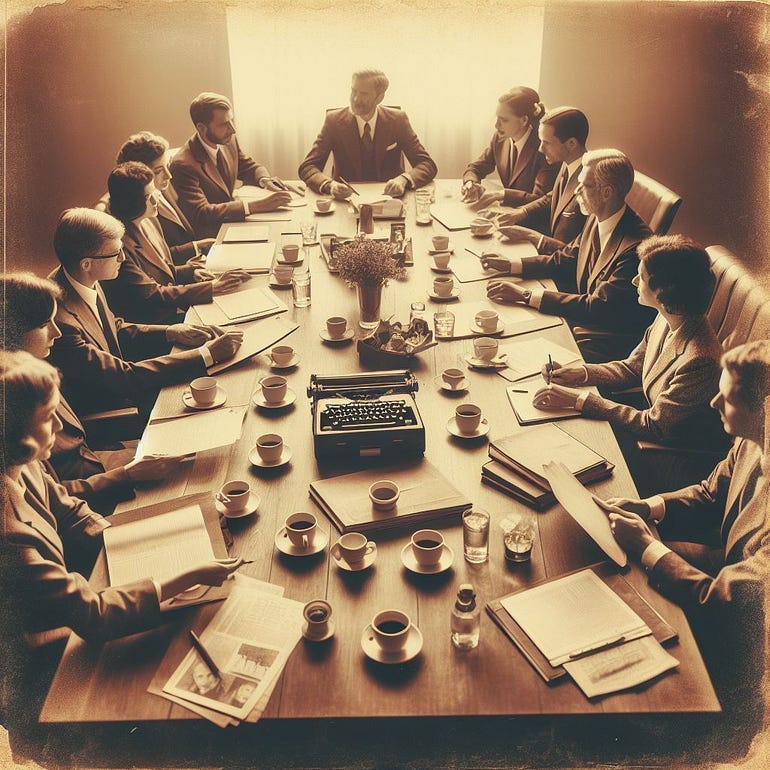I don’t know who I’m writing for.
That’s why I write.
‘Tell us your name, the organisation that you represent, and offer a brief summary of the last time you assaulted a fortified and heavily defended building’.
Corporate suits occupied every seat around the boardroom table, and now they looked nervous. I selected one at random to begin the introductions. He was a balding, middle aged man who introduced himself as Geoff. He was an engineer, and worked for a large corporation that designed and manufactured circuit boards. He also added that he had never assaulted a fortified and heavily defended building.
Geoff handed over to the next delegate, who offered a similar profile. A product manager who too had never assaulted a fortified and heavily defended building. This relay continued around the table, with a growing consensus that collectively these delegates would be unlikely to seize and secure any structures from a determined and well armed opposition.
This was going precisely as I had hoped.
When you must design and host a workshop to solve difficult problems with clever but disruptive innovations, you really need to know who you’re talking to. So many allegedly innovative ideas are science fictions dreamed up in the laboratory, office, in the shower or on the toilet by engineers who have never once experienced the problem that they hope to solve.
We reach the final delegate, who sat quietly unremarkable amongst this group. This is something to be aware of when discussing military matters. You can’t really tell who knows their stuff, just by looking. The truly skilled and experienced operators will remain anonymous. He began to speak.
‘It was dark. My team were soaked to the skin from the torrential rain. The crump of our supporting mortar was close, but at least the flashes of fire momentarily illuminated our objective. For just a moment we catch glimpses of our destination. Snapshots of a large building loomed from the dark, in silhouette. The mortar fire ceased, and I gave the order to advance…’
A suitably dramatic pause ended this account, and now the assembled workshop knew precisely who possessed the experience we required to understand the problem at hand, and who did not.
To understand the problem, you need the right people in the room. Today, we were to discuss military matters, and I really needed the group to understand who around that table understood the problem we intended to discuss. At the very least, I needed each delegate to admit that they did not.
We understood who in the room represented the customer, and had secured our persona hypothesis. We knew who we were designing for, had direct access to this customer and could wrap our designs around his experiences.
Much advice on writing suggests that you understand who you are writing for. Who is your reader? What do they want? Why would they read your work? What value can they draw from your words?
I have no idea who I’m writing for.
I’m not a writer.
I’m searching for something.
I am a rocket scientist, and my professional role is disruptive innovation. My job is to devise the crazy ideas that solve intractable problems. To achieve this, I employ a large armoury of complex and esoteric techniques to interview customers, understand their problems and devise clever, elegant ideas that might amplify their gains whilst alleviating their pains.
I work at Day 1 of an idea. I am present at the genesis of something new. This might sound like a rather exciting role that many would wish to adopt. It’s true that young engineers early in their career are seduced by the idea of new concept design. However, they don’t stay long.
In the design process, new concepts exist at the opposite end to those outcomes that produce profit. The design, manufacture and sale of products are where you can best demonstrate your added value to the business. You are not going to gather credit for an idea devised years ago. Hence, most engineering careers evolve away from the new concept development and the crazy ideas.
To maintain your career a decade away from these corporate profits is the act of a fanatic. To remain a specialist with a deep understanding of how to unearth clever ideas to difficult problems is to join a small population, and so there seem to be very few of us.
I write, to find the others.
The only example I have is myself, but I suspect my colleagues would consider me atypical in most regards. Consequently, I assume that my peers too are an assortment that are hard to define.
I don’t write to entertain a well understood audience. I assume that most writing is a start-up. I cast my net as wide as my engineer’s meagre literary toolbox can encompass to determine what product might attract the attention of those who do what I do, or need what I have, or might simply be entertained by my antics.
I write about my specialism, but in a variety of styles to a variety of reactions and engagement. I write as a formal and dour textbook. I offer personal anecdotes that hopefully amuse. I hide technical content in faux movie reviews. I wrote a fairy tale with princesses and dragons, in which our heroine must resort to engineering design to resolve her captivity. I have started a series of fake fables, each hiding an engineering principle amongst the lush foliage of Eden itself. I even wrote a poem. My first ever.
I write not to a known readership, but to discover who my readers are.
Feel free to introduce yourself in the comments, if that reader is you.
The Italian Job.
Do you enjoy puzzles? Disruptive innovation is all puzzle solving. Epic puzzles that can span cities, continents, days, decades or centuries. Or small, personal puzzles that could change your life. Devious plans, to get you what you want. For example, consider the movie



